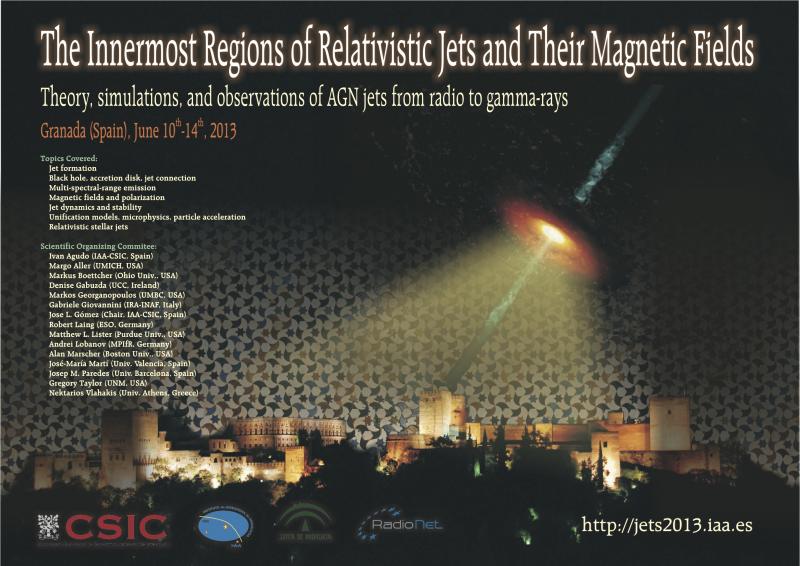The Innermost Regions of Relativistic Jets and Their Magnetic Fields. Granada (Spain). June 10th-14th, 2013.
Potter, William
Uncovering the physics behind the blazar sequence using a realistic model for jet emission.
Author list: William J. Potter and Garret Cotter
Blazar spectra are one of the most important windows into the physical processes occurring along jets. The spectrum, composed from the different emitting regions along the jet, allows us to constrain the physical conditions in the jet. I will present my work modelling blazar spectra using an extended inhomogeneous jet model with an accelerating, magnetically dominated parabolic base transitioning to a slowly decelerating conical section motivated by observations, simulations and theory. We set the inner geometry of our multi-zone jet using observations of the jet in M87 which transitions from parabolic to conical at 105 Schwarzschild radii. This model is able to reproduce quiescent blazar spectra very well across all wavelengths (including radio observations) for a sample of both BL Lacs and FSRQs. Using this inhomogeneous model we are able to constrain the location at which the synchrotron emission is brightest in these jets from fitting to the optically thick to thin synchrotron break. We find that the radius of the jet at which the synchrotron emission is brightest (where the jet first approaches equipartition) scales approximately linearly with the jet power. In agreement with previous work we find that BL Lacs are low power blazars whereas FSRQs are high power blazars. Together with our simple jet power-radius relation this leads us to a deeper understanding of the physics underlying the blazar sequence.




